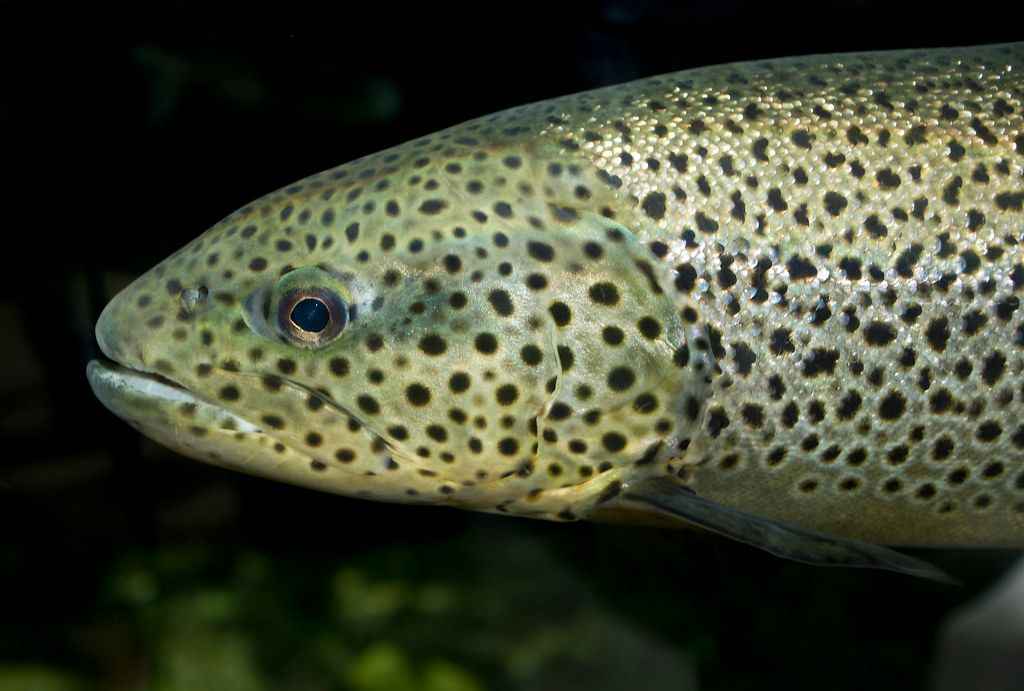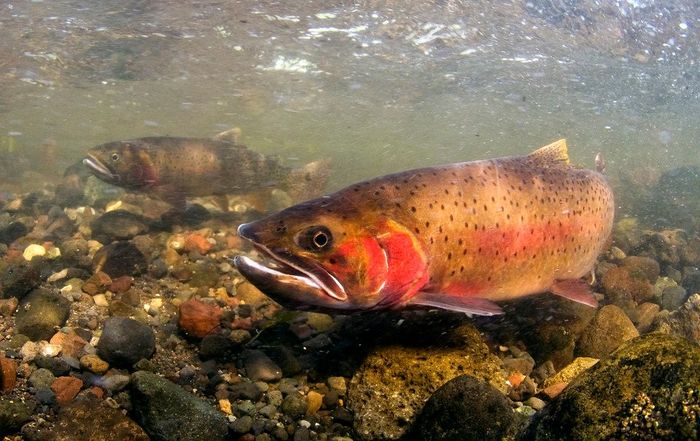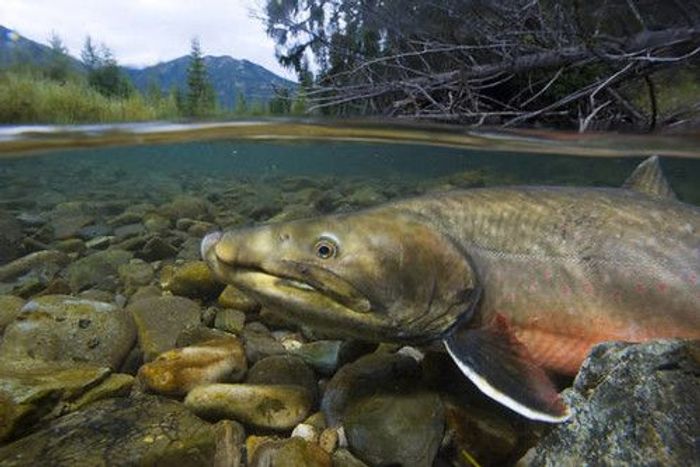Guide to Types of Trout Fish in North America
North America has a lot to offer when it comes to trout. Here is an extensive list of what kinds of trout you can fish there.

Trout is one of the most famous game fish in North America. They are a species known for making acrobatic moves when caught. Aside from being a feisty game fish, they have a reputation as an important food source. Trout swimming near the surface is one of the reasons why they’ve been historically associated with fly fishing. But they can vary a lot too; some species prefer to swim in the deeper depths while others like to remain near the surface, which makes fly fishing difficult. Figuring out the differences and how they behave can be overwhelming, but don’t worry. We’re here to help you get to know your favorite freshwater fish.
Trout in North America
First, let’s differentiate trout and salmon. Both come from the family Salmonidae, but the main difference is salmon are mainly saltwater fish while trout are mainly found in freshwater. Generally, trout have rounder heads and bodies and are more heavily spotted. Here are identifiers for trout in North America.

Rainbow trout
The rainbow trout is the most popular in North America. It’s well known for its beautiful pink stripe along its body and its prized meat. It’s one of the bigger trout species - they can reach 45 inches long and almost weigh up to 50 lbs. They can be found in the scenic mountainous regions of Colorado, Idaho, Utah, Oregon, and New York.

Cutthroat trout
Another famous species is the cutthroat trout. They have a prominent blood-red slash pattern along their body and lower jaw, hence the name cutthroat trout. They originated from the Rocky Mountains, where the waters are clear, well-vegetated, and have low fine sediments. They’ve been introduced in the southeast states for sports fishing. Cutthroat are solitary creatures. They only interact with other cutthroat for mating purposes or to hunt.
Golden trout
Considered to be one of the most beautiful trout species in the world is the golden trout. They’re easy to identify with their bright, golden hue with black spots and a red slash on their head and body. They are native to Sierra Nevadas, but they’ve been introduced to other mountainous regions such as Alberta to help their declining population. The golden trout prefer to swim in schools and are more active during summer.

Brown trout
Originally, this species came from Europe but was introduced during the 1880s for sports fishing, but their population wasn’t controlled and is now considered a naturalized species. Their color ranges from yellow to silver with brown spots. This species’s depth varies from 10 to 60 feet, one of the deeper ranges for trout. They are active both day and night to hunt their favorite insects. Their distribution spans from both east and west of the U.S.A., but the best fishing spots are in Rose and Hughes Rivers in Virginia.
The Hybrids and Chars
What’s been listed first are the true trout, there’s another genus that looks like trout, but they aren’t. These are the cousins of the trout called the chars. They also belong to the Salmonidae family. Chars are geographically distributed in northern circumpolar regions, and they have darker colors with light spots, compared to the trout's lighter colors with darker spots.
Dolly varden
This fish has a dark brown color, and they start from the seas and then migrate to freshwaters. Anglers love to target this fish for it has a higher aggressive nature than its relatives. They are primarily found in the Gulf of Alaska to the Alaska Peninsula.
Brook trout
This fish is mostly found in the northeastern regions of the U.S.A. and is scattered across Canada. They have a dark-olive hue with yellow to gold spots, and their fins have white markings along the edges. Brook trouts are known for preferring waters pristine clear waters.

Bull trout
This is one of the rare char species. Their color varies from olive-green to pale yellow. They are migratory fish that may sometimes visit the open seas. They are known as top predators in their native regions of Canada to northwestern states of the U.S.
Lake trout
They are considered to be the biggest of the chars. They can grow up to 102 lbs, but they grow slowly and are late to mature. Their color ranges from olive to dark brown with white-colored spots. They also have deeply forked tails. Their range is from northern Canada, Alaska, New England, and the Great Lakes.
Tiger trout
One of the hybrid species. It’s a combination between a female brown trout and male brook trout. It has a dark brown color with a yellow and black pattern. Tiger trout are voracious eaters. They were made to curb out the growing number of minnows in local areas. They can be found in the rivers of Pennsylvania, Colorado, Idaho, and Washington.
Arctic char
A native of the Arctic regions of Northern Canada and the coastal areas of the Atlantic and Arctic oceans. This fish has a black to brown hue with a pink or red underside. They are often mistaken for Dolly Vardens, but Arctic chars have deeply forked tails and have fewer spots. They are anadromous and can be found in lakes, rivers, and even in the open seas.
Splake
This one is a hybrid of brook trout and a lake trout. They look similar to the brook trout but with a forked tail. Splakes are known for their aggressive behavior than most chars. Their primary range is from the Great Lakes and other lakes from Colorado, Utah, Idado, New York, and Maine.
Whether if it’s a char or trout, catching any of these fish will guarantee you a fun time to explore the environment around you. Try to make a list of these species, and maybe you can try to find one if you’re in range.



